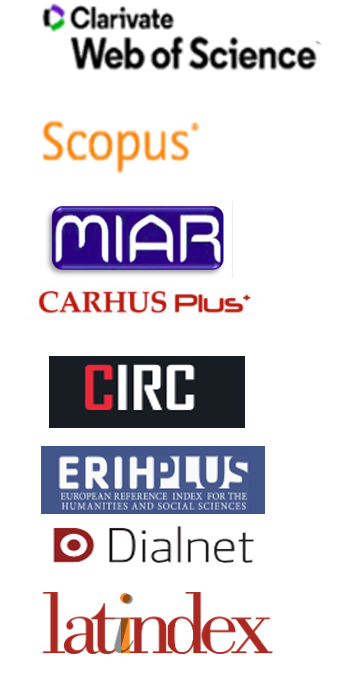Diseño de una unidad didáctica sobre la conservación del Patrimonio. ¿Qué tipo de enseñanza requieren los temas sobre conservación del Patrimonio?
Abstract
La enseñanza del Patrimonio Histórico y Cultural en los colegios de primaria y secundaria se ha cubierto ampliamente en los últimos años. Sin embargo, el tema específico de la conservación del Patrimonio apenas se ha desarrollado a pesar de su trascendencia desde el punto de vista de la preservación futura de los distintos elementos que conforman el Patrimonio. En este trabajo se presentan los aspectos teóricos y prácticos en los que se ha basado el diseño de una unidad didáctica sobre conservación del Patrimonio. Entre los principales objetivos que pretende cubrir esta unidad destacan el significado del Patrimonio Cultural, la importancia de su conservación, la posibilidad de reconocer lugares con Patrimonio, cuándo es importante conservarlos, las diferencias entre conservación y restauración, la influencia de las condiciones ambientales, etc. Las posibles actividades de evaluación y los colegios más adecuados en los que poner en práctica la unidad didáctica son también alguno de los temas tratados en este trabajo.
Downloads
- Copyright and intellectual property belongs to author. Author guarantees editing and publishing rights to Ge-Conservación Journal, under a Creative Commons Attribution License. This license allows others to share the work with authorship and the original source of publication acknowledgement.
- Articles can be used for scientific and educational purposes but never for commercial use, being sanctioned by law.
- The whole content of the article is author’s responsibility.
- Ge-Conservación Journal and authors may establish additional agreements for non-exclusive distribution of the work version published at the Journal (for example, on institutional repositories or on a book) with acknowledgment of the original publication on this Journal.
- Author is allowed and encouraged to disseminate his works electronically (for example, on institutional repositories or on its own website) after being published on Ge-Conservación Journal. This will contribute for fruitful interchanges as also for wider and earlier citations of the author’s works.
- Author’s personal data will only be used for the Journal purposes and will not be given to others.









